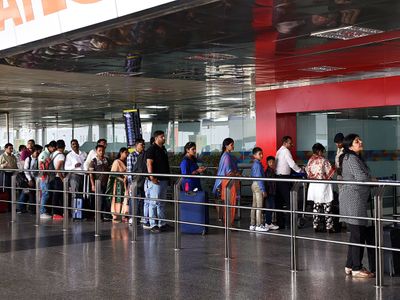COVID-19 Came To India Mainly From Two Countries, Say IIT Experts; Which Ones?

New Delhi: Six months into the pandemic, an analytical study done by Indian Institute of Technology (IIT), Mandi says that travellers from Dubai and the UK were primary sources of COVID-19 importations into India, The New Indian Express (TNIE) reported quoting PTI.
The research, published in the Journal of Travel Medicine says COVID-19 got induced into Indian states mainly due to international travels.
Infected cases from Tamil Nadu, Delhi and Andhra Pradesh played less role in spreading the disease outside their communities. However, infected people in Gujarat, Rajasthan, Maharashtra, Kerala, Jammu and Kashmir, and Karnataka played a significant role in the local transmission, and some of them caused interstate transfer too.
“We tracked the spread of COVID-19 and its diffusion from the global to the national level and identified a few superspreaders who played a central role in the transmission of the disease in India. The COVID-19 spread in phase one was traced using the travelling history of the patients, and it was found that most of the transmissions were local,” Sarita Azad, Assistant Professor, IIT Mandi, told PTI.
“The research team has used the travel history of infected patients from January to April as the primary data source and a social network was created depicting the spread in the early phase of the pandemic. The research found that the maximum numbers of connections were established from Dubai (144) and the UK ( 64),” she added.
Azad explained that statistical metrics calculated from the data revealed that Dubai and the UK played a crucial role in spreading the disease in Indian states and were the primary sources of COVID-19 importations into India.
“Dubai’s eigenvector centrality was the highest that made it the most influential node.
Azad, who conducted the analytical study, along with her student Sushma Devi told PTI, “When a pandemic like COVID-19 subsides, a good research work serves as a record for the future. In this work, we have used real-time data and demonstrated how the disease got diffused from the global to the national level from January 30 to April 6. This will be an important contribution to understanding the disease transmission in India during the early phase of the pandemic.”

Comments are closed.